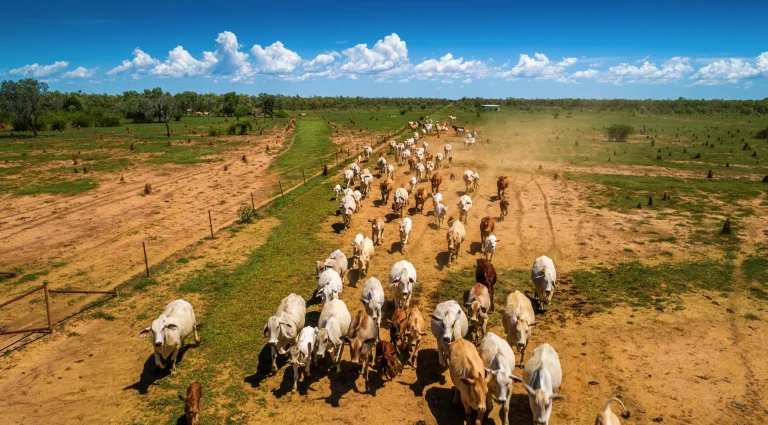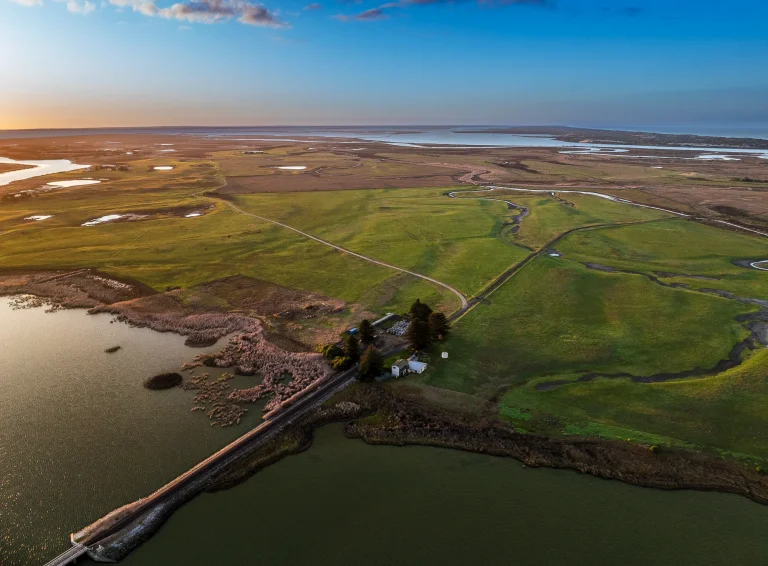Evaluating Market Trends in Grazing Land Investments: A Strategic Guide for Agricultural Property Buyers
Agricultural property investment continues to attract sophisticated investors seeking portfolio diversification and long-term value creation. When evaluating market trends in grazing land investments, understanding the complex interplay between commodity cycles, climate patterns, and capital flows becomes essential for making informed decisions. The grazing sector represents one of the most fundamental agricultural asset classes, offering both income generation and capital appreciation potential for investors who understand how to read market signals effectively.
At Agribusiness Horizons, we help clients navigate these market complexities through comprehensive analysis and strategic guidance. Our expertise in evaluating market trends in grazing land investments enables clients to identify optimal timing for acquisitions and disposals, ensuring they capitalize on favorable market conditions while avoiding potential pitfalls. Whether you’re a first-time agricultural investor or expanding an existing portfolio, understanding these market dynamics is crucial for success. Contact us to learn how our specialized knowledge can enhance your investment strategy.
This comprehensive guide will examine the key factors driving grazing land values, regional market variations, investment performance indicators, and strategic considerations for both buyers and sellers in today’s agricultural property market.
Understanding Current Grazing Land Market Dynamics
The grazing land market operates within a complex ecosystem influenced by multiple interconnected factors. Commodity prices for beef and lamb create the underlying income foundation for grazing properties, while land values reflect both current productivity and future potential. Recent market conditions have shown remarkable resilience in the grazing sector, with quality properties commanding premium prices from both domestic and international buyers.
Climate patterns significantly impact grazing land valuations, with properties in reliable rainfall zones typically maintaining stronger value propositions. Water security has become increasingly important, with properties featuring permanent water sources or irrigation infrastructure attracting heightened investor interest. The integration of technology in livestock management and pasture improvement has also created value differentiation between traditional operations and those adopting modern agricultural practices.
Capital availability and interest rate environments directly influence buyer capacity and investment returns. The current financing landscape presents opportunities for well-positioned investors, while also creating challenges for highly leveraged operations. Understanding these financial dynamics is essential when evaluating market trends in grazing land investments, as they directly affect both transaction volumes and price discovery mechanisms.
Regional Market Variations and Investment Opportunities
Australia’s diverse agricultural regions present varying investment opportunities within the grazing sector. Queensland’s expansive cattle country offers scale advantages and proximity to export facilities, making it attractive for large-scale operators and institutional investors. The state’s diverse climate zones provide opportunities ranging from intensive coastal operations to extensive inland grazing systems.
New South Wales combines high-rainfall coastal regions with productive inland areas, creating a diverse market for grazing investments. The state’s established infrastructure and proximity to major population centers enhance property values, particularly for operations capable of direct marketing premium products. Victoria’s intensive grazing regions command premium prices due to high carrying capacities and reliable rainfall patterns.
South Australia and Western Australia present opportunities for large-scale operations, with vast pastoral leases offering extensive grazing rights. These regions typically require different investment approaches, focusing on scale economies and efficient management systems. The Northern Territory’s tropical grazing country offers unique opportunities for investors comfortable with extensive management systems and seasonal variability.
Understanding these regional variations is crucial for investors seeking to optimize their grazing land portfolios. Each region presents distinct risk-return profiles, requiring tailored investment strategies that account for local market conditions, infrastructure availability, and operational requirements.
Investment Performance Indicators and Valuation Metrics
Successful grazing land investment requires understanding key performance indicators that drive property values. Carrying capacity remains the fundamental metric, typically measured in dry sheep equivalents per hectare or cattle per hectare. Properties with higher carrying capacities generally command premium prices, reflecting their superior income-generating potential.
Rainfall reliability and seasonal distribution patterns significantly impact grazing land values. Properties in areas with consistent annual rainfall typically trade at premium multiples compared to those in variable rainfall zones. Water infrastructure, including dams, bores, and reticulation systems, adds substantial value by reducing climate risk and improving operational flexibility.
Soil quality and pasture composition directly influence long-term productivity and sustainability. Properties with improved pastures and soil health programs often achieve higher valuations due to their enhanced carrying capacity and reduced input requirements. Fencing quality and yard infrastructure also contribute to operational efficiency and property values.
Location factors including proximity to processing facilities, transport infrastructure, and service centers affect both operational costs and property values. Properties with direct access to major transport routes typically command premium prices due to reduced logistics costs and improved market access.
Strategic Considerations for Grazing Land Acquisitions
When evaluating market trends in grazing land investments, strategic buyers must consider multiple factors beyond current market conditions. Property scale and management intensity requirements should align with investor capabilities and objectives. Extensive grazing operations require different skill sets and capital commitments compared to intensive systems.
Water security represents a critical strategic consideration, with properties featuring permanent water sources or irrigation potential offering enhanced resilience against climate variability. The ability to drought-proof operations through water infrastructure or agistment arrangements significantly impacts long-term investment viability.
Diversification opportunities within grazing properties can enhance returns and reduce risk. Properties suitable for multiple enterprises, such as cattle and sheep operations, or those with potential for value-adding activities like direct marketing or agritourism, may offer superior investment prospects.
Succession planning considerations are particularly relevant for family-owned grazing operations. Properties with established management systems and clear succession pathways often present more attractive investment opportunities than those requiring significant restructuring or management changes.
Comparison of Grazing Land Investment Approaches
| Investment Approach | Risk Profile | Capital Requirements | Management Intensity | Return Potential |
|---|---|---|---|---|
| Extensive Grazing | Moderate | High | Low | Steady |
| Intensive Systems | Higher | Very High | High | Premium |
| Mixed Enterprises | Moderate | High | Moderate | Balanced |
| Value-Added Operations | Higher | Very High | Very High | Premium |
This comparison illustrates the different approaches available when evaluating market trends in grazing land investments. Each strategy offers distinct advantages and challenges, requiring careful consideration of investor objectives and capabilities.
How Agribusiness Horizons Enhances Grazing Land Investment Strategies
At Agribusiness Horizons, we bring specialized expertise to grazing land investment evaluation through our comprehensive market analysis and strategic advisory services. Our team combines deep agricultural knowledge with sophisticated financial modeling to help clients identify optimal investment opportunities within the grazing sector.
Our market intelligence capabilities provide clients with exclusive insights into emerging trends, off-market opportunities, and strategic timing considerations. We leverage our extensive network of industry contacts to identify properties before they reach the broader market, giving our clients competitive advantages in acquisition strategies.
Our valuation and financial analysis services incorporate grazing-specific metrics and performance indicators to provide accurate assessments of property values and investment potential. We conduct thorough due diligence processes that examine soil quality, water resources, infrastructure condition, and operational efficiency to ensure clients make informed investment decisions.
Through our strategic advisory services, we help clients develop comprehensive investment strategies that align with their risk tolerance, return objectives, and operational capabilities. Our expertise in evaluating market trends in grazing land investments enables us to provide forward-looking guidance that positions clients for long-term success in this dynamic sector.
Future Trends and Market Outlook for Grazing Land Investments
The grazing land investment market continues evolving in response to changing consumer preferences, technological advances, and environmental considerations. Sustainable grazing practices are becoming increasingly important, with properties demonstrating environmental stewardship commanding premium valuations from environmentally conscious investors.
Technology integration in grazing operations is creating new value propositions, with properties featuring precision agriculture systems, satellite monitoring, and automated management systems attracting sophisticated investors. These technological advances are improving operational efficiency while reducing labor requirements and environmental impact.
Carbon credit opportunities are emerging as additional income streams for grazing properties, with well-managed operations potentially generating significant revenue through carbon sequestration programs. Properties with established carbon credit programs or potential for soil carbon enhancement are likely to achieve premium valuations.
International investment interest in Australian grazing land remains strong, driven by food security concerns and the country’s reputation for high-quality agricultural production. This ongoing international demand is expected to continue supporting property values, particularly for large-scale operations with export market access.
Conclusion
Successfully evaluating market trends in grazing land investments requires comprehensive understanding of multiple interconnected factors, from commodity cycles and climate patterns to technological advances and regulatory changes. The grazing sector offers compelling investment opportunities for those who understand how to read market signals and position themselves strategically within this dynamic landscape.
The key to successful grazing land investment lies in thorough market analysis, strategic timing, and comprehensive due diligence processes that examine both current performance and future potential. Properties that combine productive capacity with strategic location advantages and modern infrastructure are likely to continue commanding premium valuations in the evolving agricultural property market.
As you consider your next grazing land investment, what factors will be most important in your decision-making process? How will you balance the desire for immediate returns against long-term capital appreciation potential? What role will sustainability and environmental stewardship play in your investment strategy?
The grazing land investment market offers substantial opportunities for investors who approach it with proper knowledge and strategic planning. Contact Agribusiness Horizons today to learn how our expertise in evaluating market trends in grazing land investments can help you achieve your agricultural property investment objectives. Our team is ready to provide the specialized guidance you need to succeed in this rewarding but complex investment sector.



